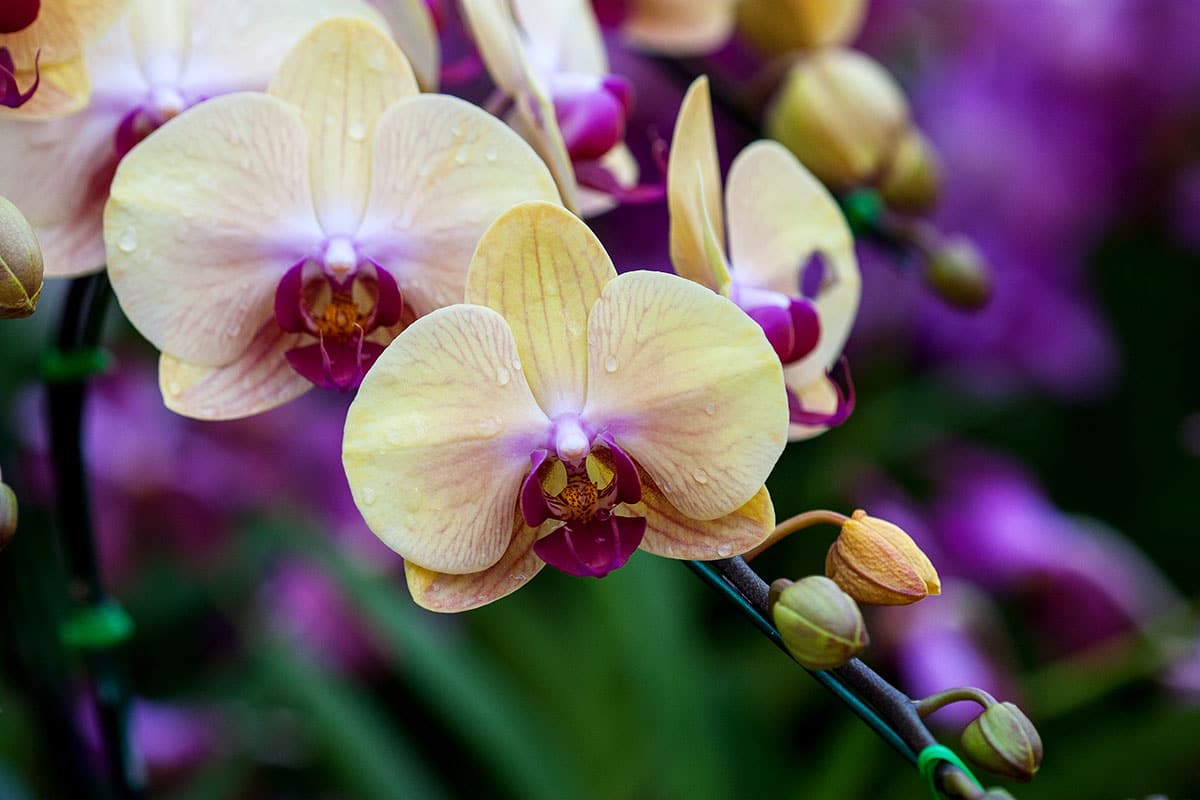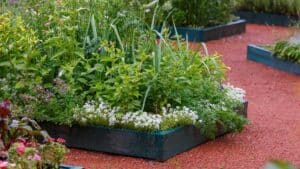Who doesn’t love orchids? With their colourful flowers that look hand-painted with impressive detail, these plants add a touch of class wherever you place them. However, orchids are a bit temperamental and if you want to see them bloom again, they need some care. Under the right conditions, orchids can give an excellent performance, especially phalaenopsis or butterfly orchids, the most common of all orchid varieties, which can bloom almost continuously in our homes.
Orchids: a short history
In their natural state, orchids are epiphytic plants, meaning that they attach themselves to a host, usually a tree, in order to grow. They do not parasitize their host, they simply cling to it to have access to light. Tropical forests being very dense, competition is fierce and they have to adapt. They feed on the ambient air and humidity and draw the resources they need to live and thrive. Used here as houseplants, orchids should be planted in specialized potting soil made of bark chips, sphagnum moss and coconut fiber among others. Your orchid will not survive in a much finer and more compact potting soil used for indoor plants.
Maintaining orchids
In order for your orchid to be at its best and most beautiful, it must be given the best possible conditions and appropriate care.
Location
Position your orchid where it receives good light all day, without direct sunlight. As this plant appreciates humidity, a well-lit bathroom can be the perfect place for it.
Watering
Watering orchids, as with most plants, is a major part of their care. The best way to water orchids is by basining. The pot, with a hole in the bottom, is immersed in water for 10 to 30 minutes, avoiding wetting the foliage. The water is then allowed to drain completely before putting the plant back in its pot. The potting soil should be allowed to dry slightly between waterings, but not completely. Take the time to lift the plant to check the weight and condition of the potting soil and touch it to see if it is time to bathe your orchid.
Feeding
The orchid is not very greedy. Feed with an orchid plant food spray from March to September, following the manufacturer’s recommendations. Avoid feeding during winter.
Repotting
Every two to three years, your orchid will need to be repotted as the potting soil resources will be exhausted. Here’s how to do it:
- Choose a pot slightly larger than the previous one;
- Fill the bottom of the pot with orchid potting soil;
- Carefully remove your plant from its pot and remove all the potting soil that has been trapped through the roots;
- Cut off any dry, soft, brown, long or curled roots;
- Place your orchid upright in the center of the pot and fill with potting soil, taking care to push it between the roots to solidify the plant;
- Don’t water right away: you need to give the roots time to heal before watering, about two weeks.
To make your orchid bloom again
It is the goal of every gardener to see his orchid bloom again. Normally, orchids bloom once a year, mostly in the spring. Cut off the flowering stems completely once the blooming period is over. Your plant will produce new stems with lots of flowers. This bloom can last for weeks! If you want to force a second bloom on the same stem, once the last flower has fallen, cut your stem above the second node and move it to a cool place, about 15 ºC, for 3 to 4 weeks. Your plant will bloom again later in the year.
Find everything you need to grow and care for your orchids in store. Our experienced consultants will be happy to advise you on the best products to use for optimal results.






